Author Samuel Beckett wasn’t exactly a food writer; he wasn’t Waiting for Geoduck. So when I spotted a framed image of him hanging on an out-of-the-way bathroom wall at acclaimed restaurant Aniar, I immediately thought of perhaps Beckett’s only food-related gem: “What do I know of man’s destiny? I could tell you more about radishes.” The fact that Samuel Beckett’s face has earned a much more prominent and permanent home on chef/owner JP McMahon’s forearm says as much about the man as a read through his menu. And, although I would venture to guess McMahon would probably agree with his countryman on that radish-based sentiment, it doesn’t stop him from trying to have a meaningful impact on the future of our food destiny, both within Ireland and globally.
Aniar, nestled on a quiet side-street not far from the rowdy Corrib River that cuts through the heart of Galway city, was conceived to reflect the west of Ireland’s unique terroir. And despite being a place that has garnered so much attention and praise—most notably in the form of a one-star rating from the Michelin Guide—Aniar would be surprisingly easy to miss when ambling down the street. This modest presence is perhaps accidental, but also echoes a distinctly Irish characteristic: modesty. With Aniar, there is an express lack of the type of glitz and glamour sometimes associated with the world’s leading Michelin-rated restaurants.
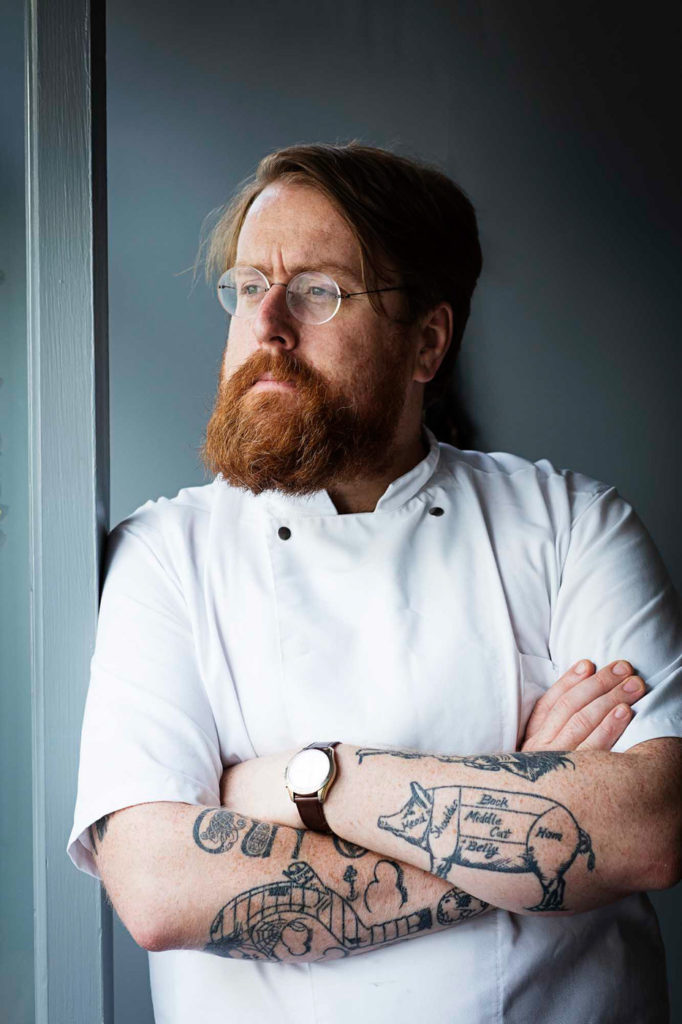
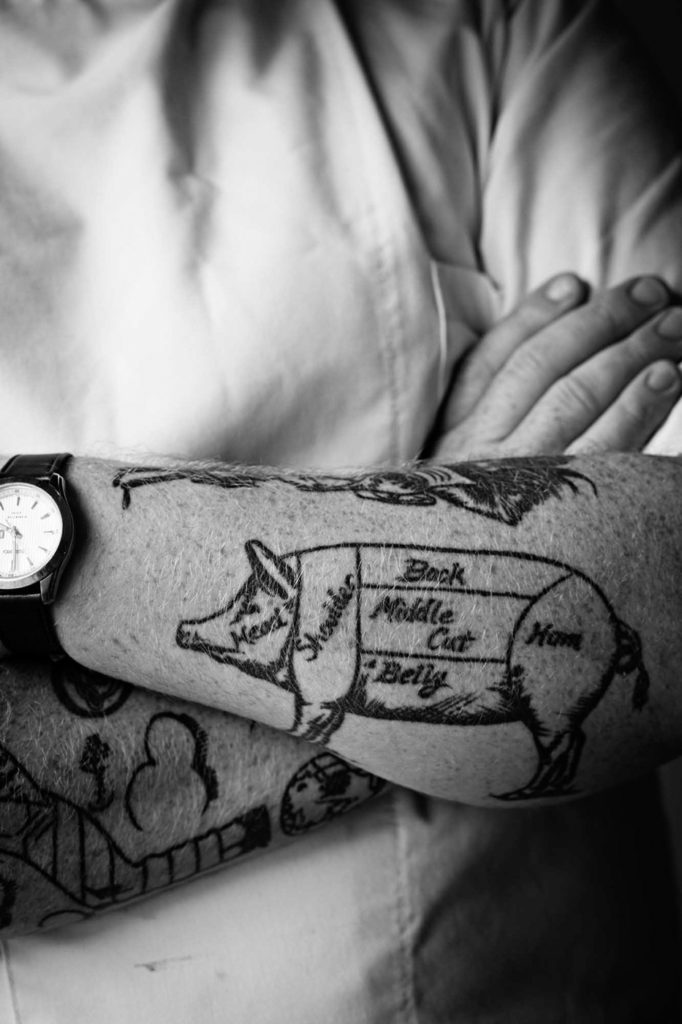
The décor is rugged and delicate in the same ways as the wild terrain of nearby Connemara. Where you would look for fine porcelain, you find handcrafted pottery from a local Galway artisan. Where you look for flashy silver flatware, you find wooden utensils, edged with the hallmark consistent inconsistencies of something that can only have been whittled by hand. Where you look for fancy linens, you find bespoke chair throws woven of Irish linen and tweed at a local Galway atelier. Where you look for servers adorned in starched uniforms, you find chefs setting down plates alongside servers in burlap aprons—both equally impassioned and knowledgeable about the food that, at times, it’s hard to tell which is which.
The artisanal spirit and bohemian vibe of this city by the sea are perhaps what allowed for McMahon and his wife, Drigin, to open Aniar, their second of three restaurants here. But while the local touches and natural décor make Aniar fitting for the town, the Michelin star and the kind of eating and spending that comes with that, does not. McMahon is the first to admit Aniar is a passion project and a tough sell to the local crowd. “It’s difficult in Galway because the minimum spend here is 95 euro without wine. There isn’t any place in Galway that is charging that amount. We’ve been here five years and a lot of people in Galway haven’t been in,” he says. “Most come in because it’s a birthday or an engagement, and we are trying to get people to invest in their food experience.”
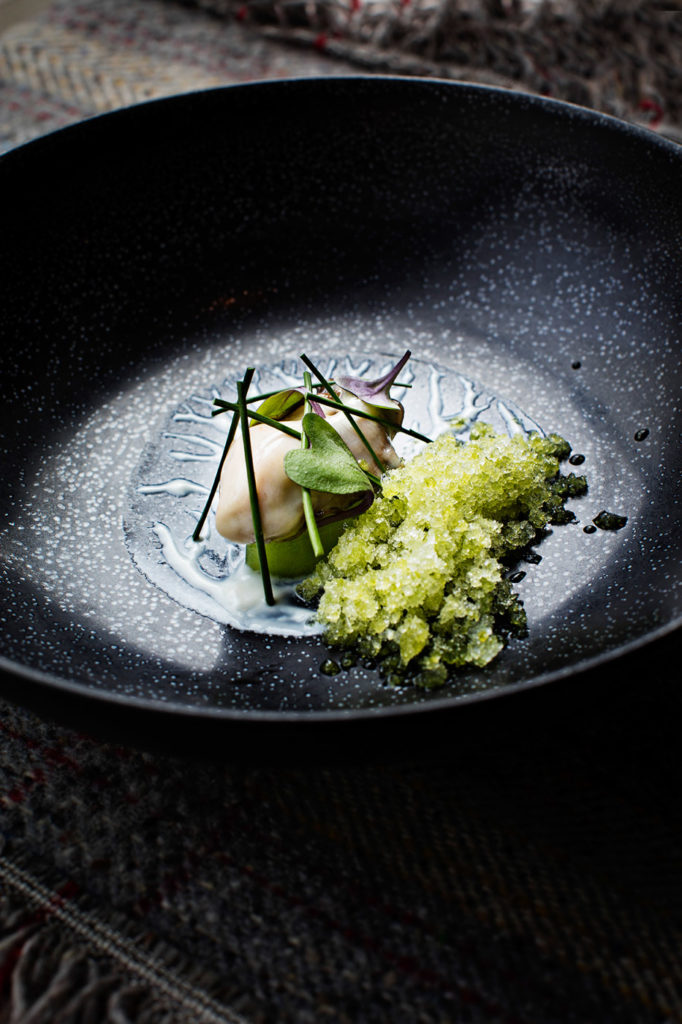
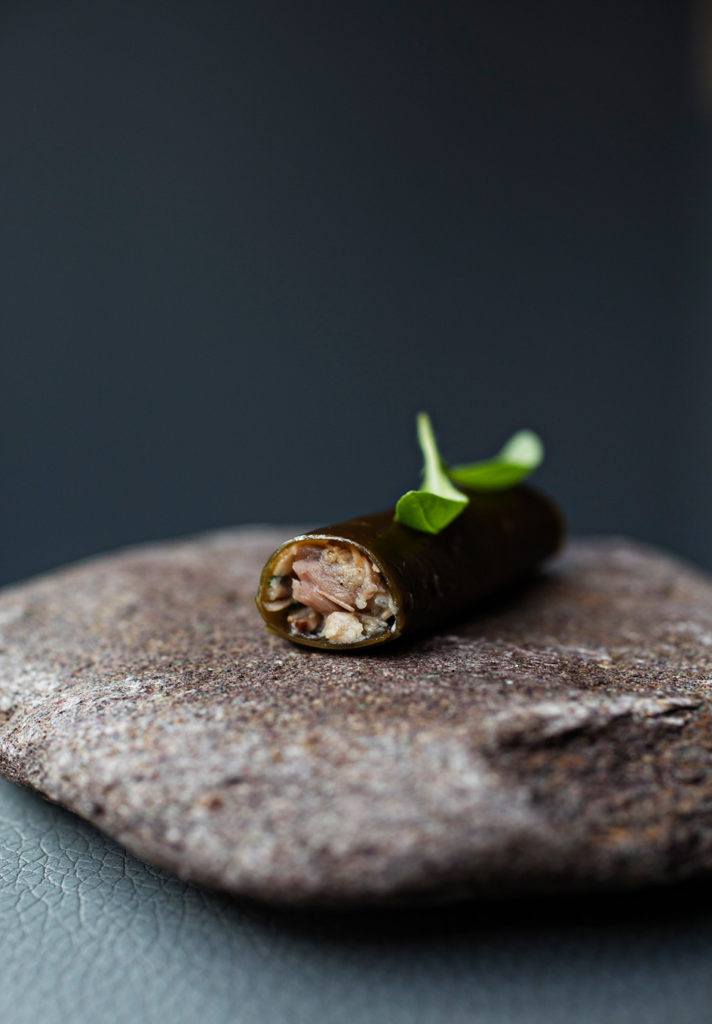
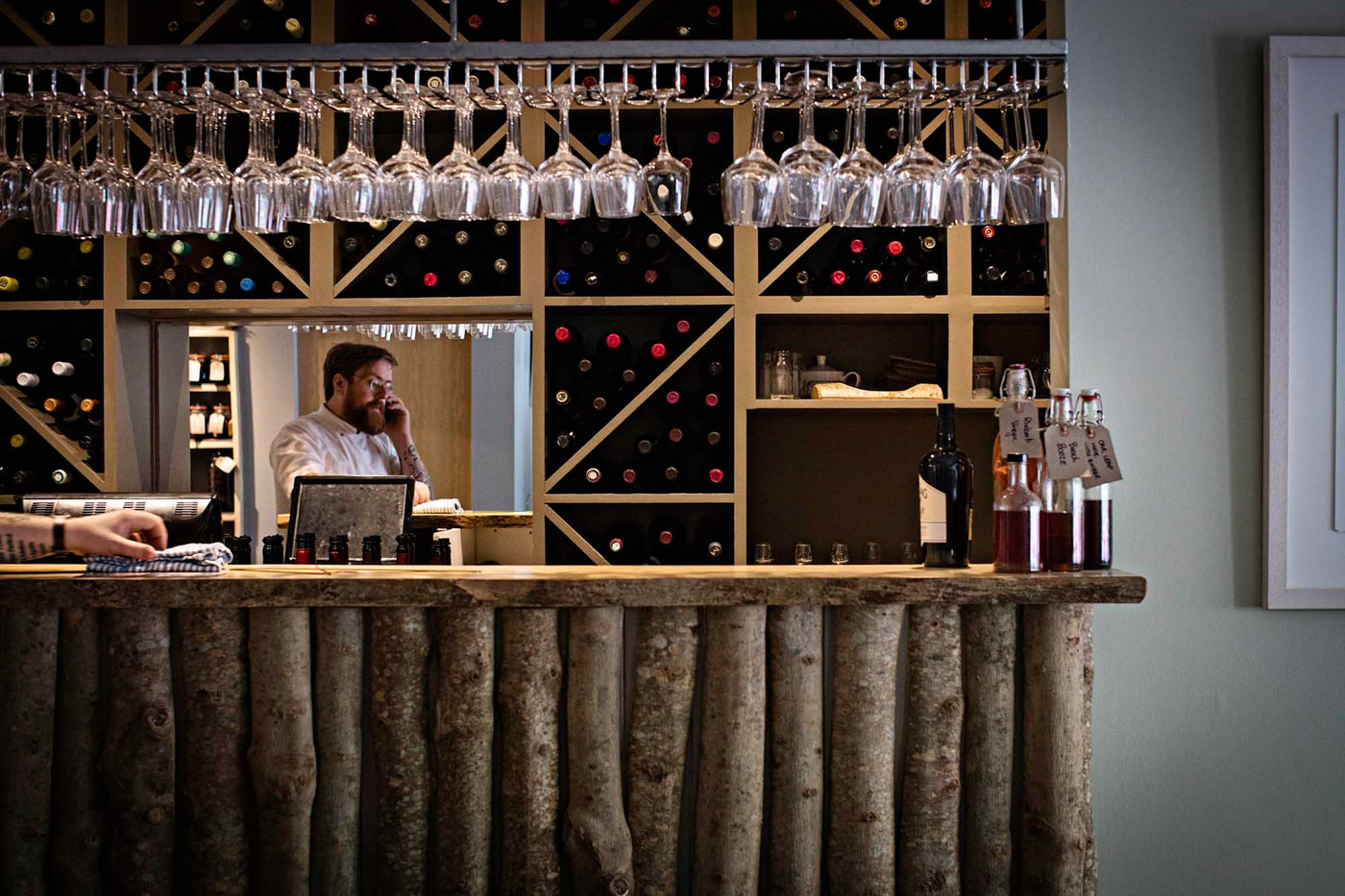
Most of their guests in the prime tourist summer season are Americans who seek Aniar out because its reputation has made the transatlantic journey; like souvenirs, glowing reviews have been carried home and shared amongst friends and relatives. Their customer base is large due to word-of-mouth reviews. “It’s very nice because it’s a very organic growth,” McMahon says.
The faith that McMahon has in the menu and ideology that drive Aniar is striking. He and his wife continue to buck convention, moving from an à la carte menu to a choice of tasting to a fully fixed tasting menu—and the prices have risen commensurately. But while McMahon isn’t certain what the end result will be, he continues to push Aniar forward. McMahon looks around his restaurant and points out remodeling plans to evolve the kitchen and restaurant again. “I suppose what I want to keep refining is to get to a point where I think Irish food deserves to be,” McMahon says. “There was a quote by Michelin recently where they said they would love to award more small restaurants two and three stars, but the possibilities haven’t been there yet. I see that as a challenge. I want to do it on a much more holistic level and also to show people that it’s possible to do it with limited resources and a lot of passion.”
While haute cuisine is not typically rife with much concern over social or food justice, much of what McMahon believes and tries to do with Aniar is parallel to his efforts with Food on the Edge, a now annual conference he organizes in Galway. “I spent time away from Aniar traveling around and saw a global movement that was taking place in these areas that were highlighting their own food,” he says. “I kept thinking about it and saying we have this produce in Ireland but we just don’t talk about it. Why aren’t we looking at this in a way that celebrates it?”
Food on the Edge is in its second year, and, like Aniar’s reputation, has expanded organically through what McMahon theorizes is an interest his global chef peers share in promoting discussion about the future of food. “The reason for setting Food on the Edge in Ireland is because I wanted to change the conversation in Ireland,” he says. “There are two principles of FOTE. On the one hand it was a benchmark for Irish food: where are we, where can we go and what can we do about it?” he continues. “The other side of it was inviting these 40 to 50 international chefs to show them what we have in Ireland and say, ‘We have this food, and you can use it as well.’”
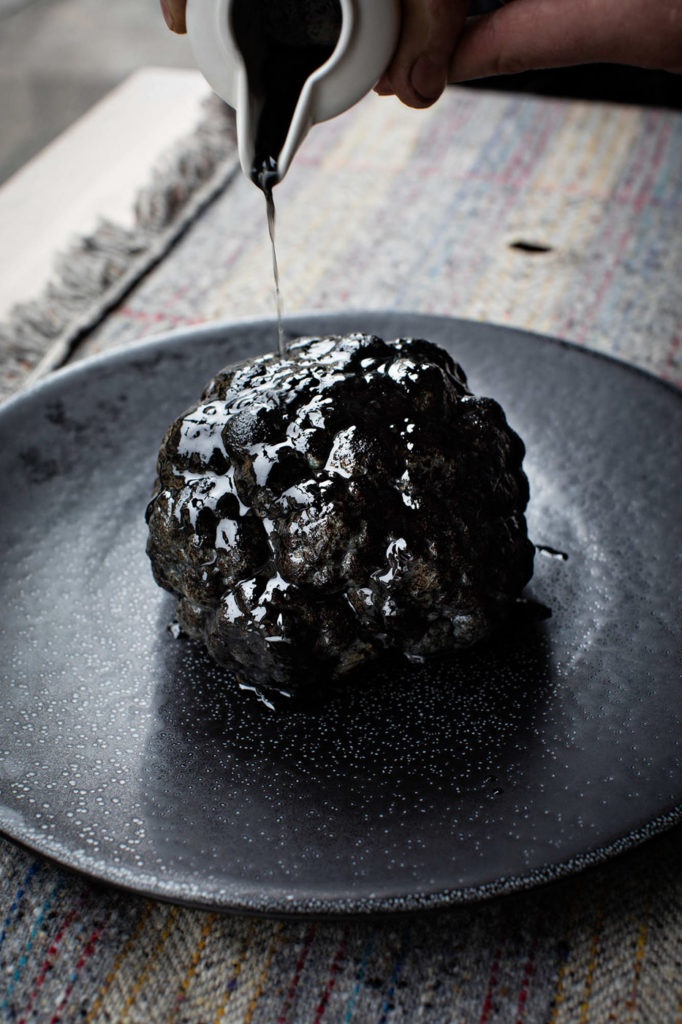
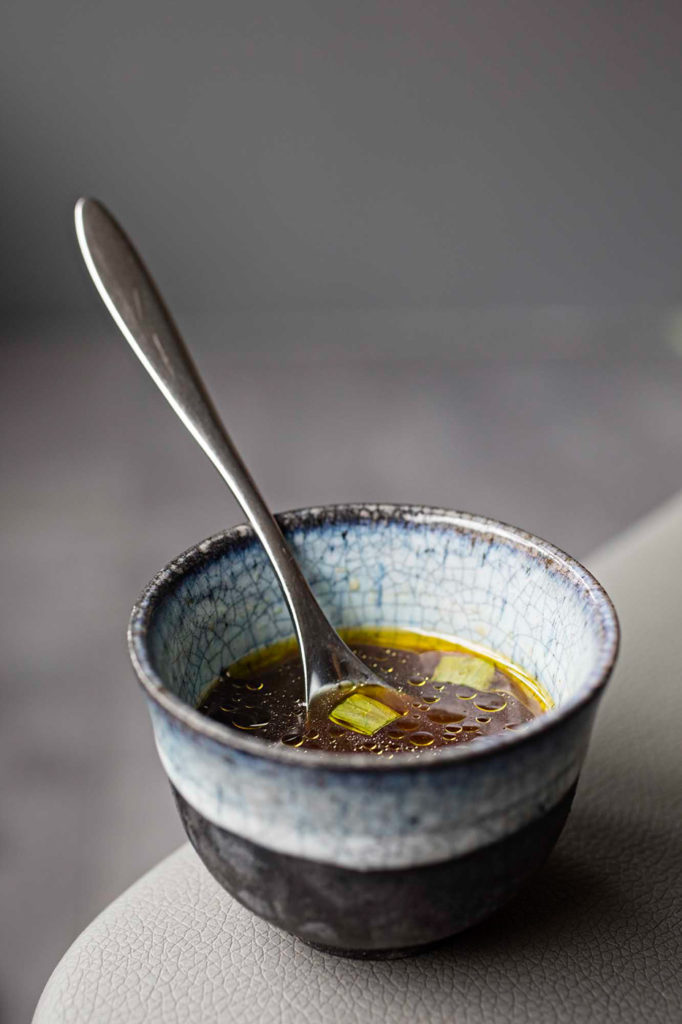
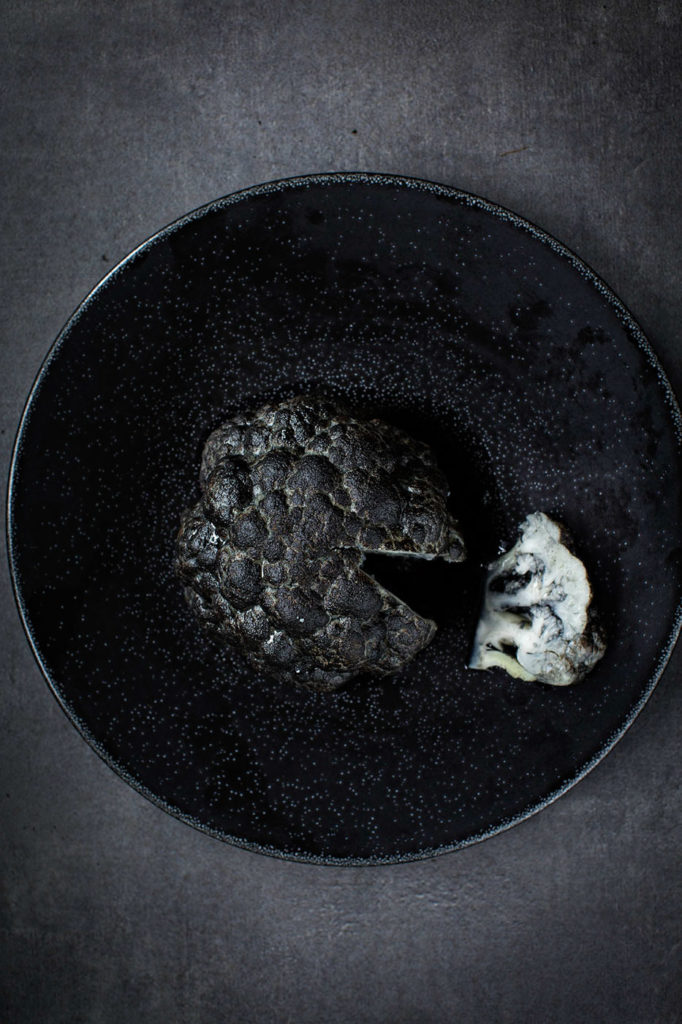
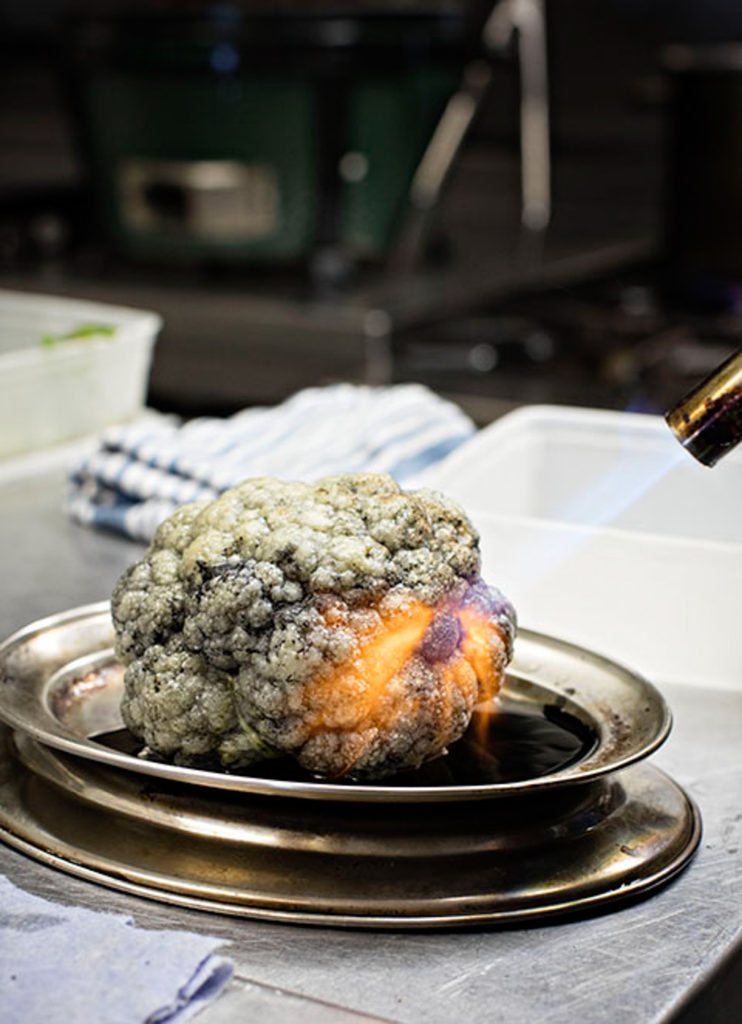
The reactions of chefs who visited Ireland in this unique way, taking it all in through the lens of food, was validating. “Sometimes, when your peer says, ‘This is really amazing,’ you appreciate it more,” McMahon says. Getting back to connections with the land, the producers, the food, and the terroir are themes of not just FOTE, but also of McMahon’s restaurants. “It’s about inviting [outside] speakers and mixing them with Irish speakers and, hopefully, out of that dialogue will come better food practice—better restaurants, better food producers, and artisan producers becoming more successful,” he explains.
For a man with such emphasis on championing locally sourced food, it is interesting that the first restaurant McMahon and his wife opened in Galway was Cava, which focuses on Spanish tapas. McMahon makes no bones that without the success of Cava, Aniar would not be feasible. The day I spoke with McMahon, there were 150 bookings at Cava, and 10 at Aniar. “I think for a long time we had a very Catholic attitude towards food in the sense that food was there for fuel, not a pleasurable celebration. We don’t have that Mediterranean vibe where everyone sits around to eat and be social. I suppose that’s what led us to do Cava,” he tells me. “The sociability of tapas—everyone sits down, eats late, shares, has a chat. Even when I see my parent’s generation now, my father still wouldn’t be one to take pleasure in a food experience.”
That eating and food hasn’t traditionally been viewed as a social or pleasurable experience, but instead a necessary one is poignant when you consider the trajectory of Irish food and how far it has come in a relatively short period. It is fairly undisputed, and even McMahon points out, that with her restaurant in Ballymaloe House in the 1960s, Myrtle Allen blazed a trail that embraced eating for pleasure, dining out, and singing the praises of local bounty. McMahon is trying to drive home this same appreciation for what the Irish land and sea have to offer at Aniar. “It was something we wanted to investigate—to try and produce a food out of the West, or Ireland—and limit the amount of produce coming from elsewhere,” he says.
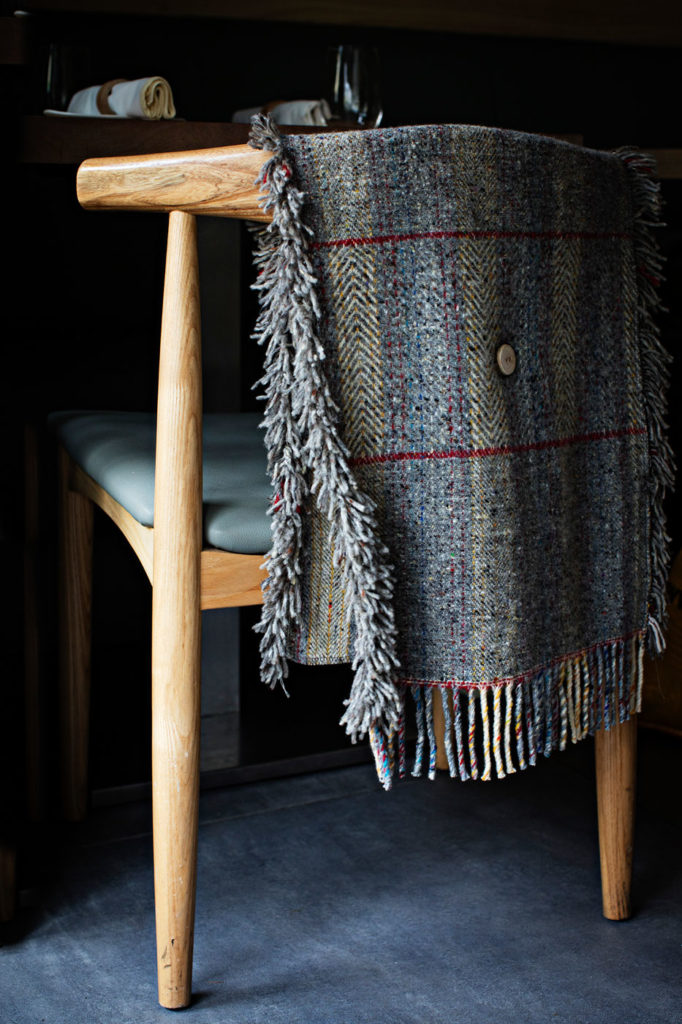
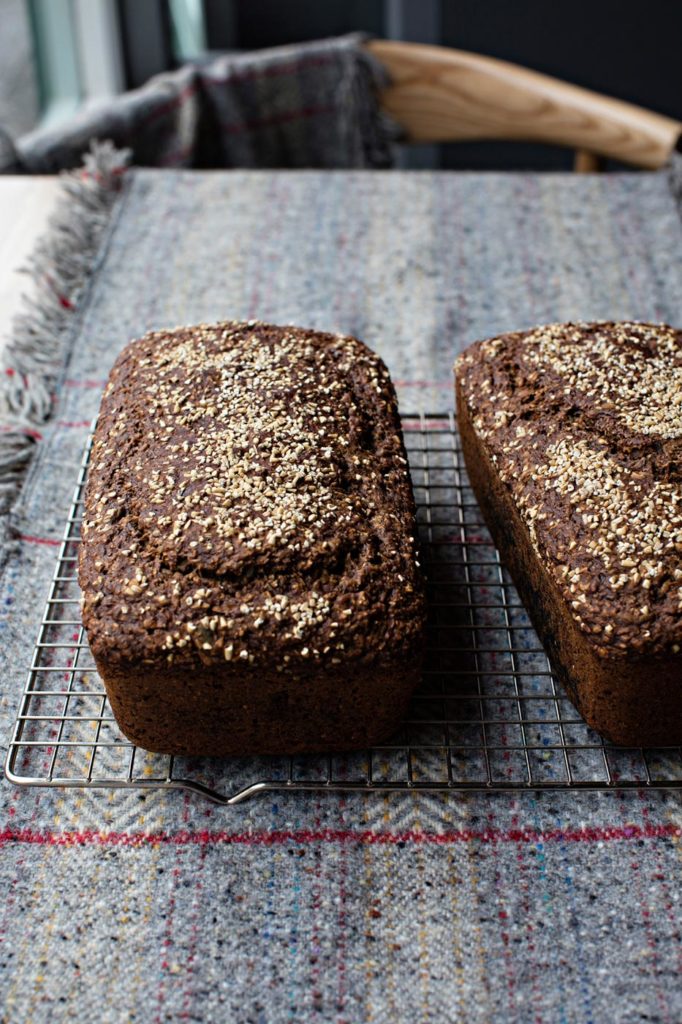
“There are certain things you can’t get by without, and there are two things we are always struggling with: sugar and flour. We don’t produce any sugar in Ireland anymore, and we don’t produce any white flour,” McMahon continues of the challenges associated with this effort. “We don’t have the climate for white flour. I think that’s why you get soda bread as a typical bread for Ireland because you have a very coarse flour and then you have soda which is really strong, much stronger than yeast and it kind of explodes the bread and makes it palatable.”
But there is a tremendous variety of ingredients that can be sourced in Ireland. As we wrap up our time together, McMahon muses on the future of Irish food, which—evident in the way he cooks at Aniar and in the pride and fervor that fuels Food on the Edge—is something he has clearly given a lot of thought to. McMahon has great reverence for Japanese cuisine, and notes the parallels he sees between Japan and Ireland in terms of seafood and seaweed. With over 3,000 varieties of edible seaweed off the western coast of Ireland alone, McMahon believes the future of Irish food will involve more seaweed and raw fish, and, “Paying a lot more attention to our wild food, which is popular anyway, but in a more systematic way.” McMahon shares with me notions on land-bound options as well. “Something I’d start looking into is insects. The few times I’ve had them, there’s an interesting flavor. I think it’s going be a growing source of protein,” he muses.
This last notion is served through a sly smile, with a bit of charming mischief in his eyes. It’s easy to become complacent with success in the restaurant business—to build a reputation, collect the money as it comes in, and coast along. McMahon, with three restaurants, a Michelin star, an exciting international food symposium, and frequent appearances on Irish television, could easily be resting on his laurels. But instead, the chef is also a bit of an explorer, intentionally seeking out the nooks and crannies where potential for change exists. McMahon is the type of food pioneer willing to take risks, sure that the small, seemingly insignificant changes that happen here and there will eventually add up to a complete shift in mentality down the road—even if, like Beckett, he isn’t entirely sure what that destiny will be.
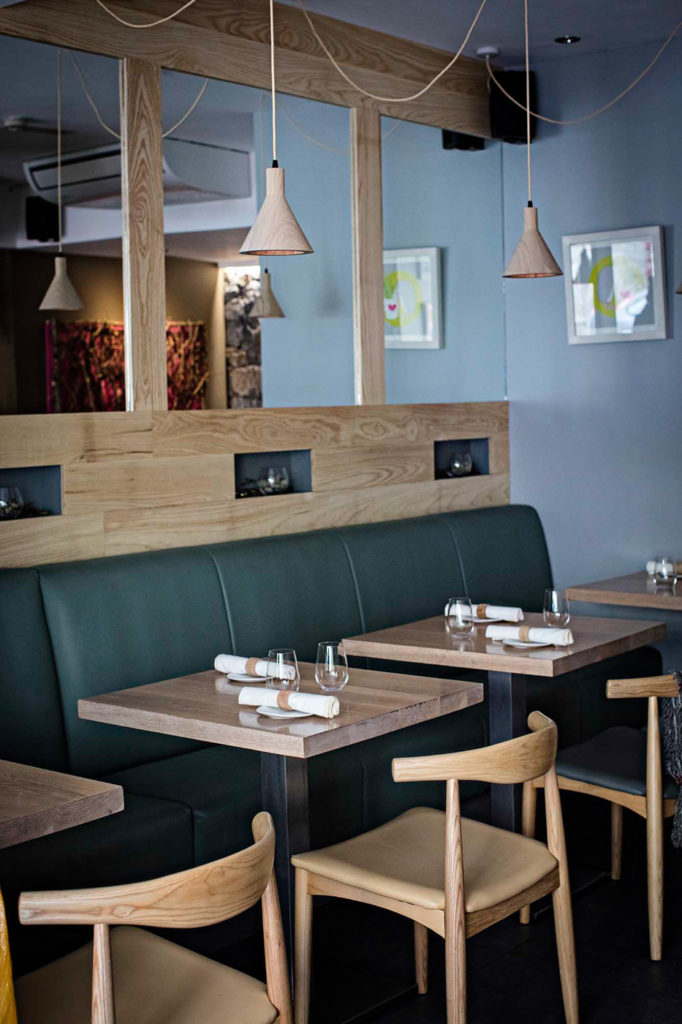
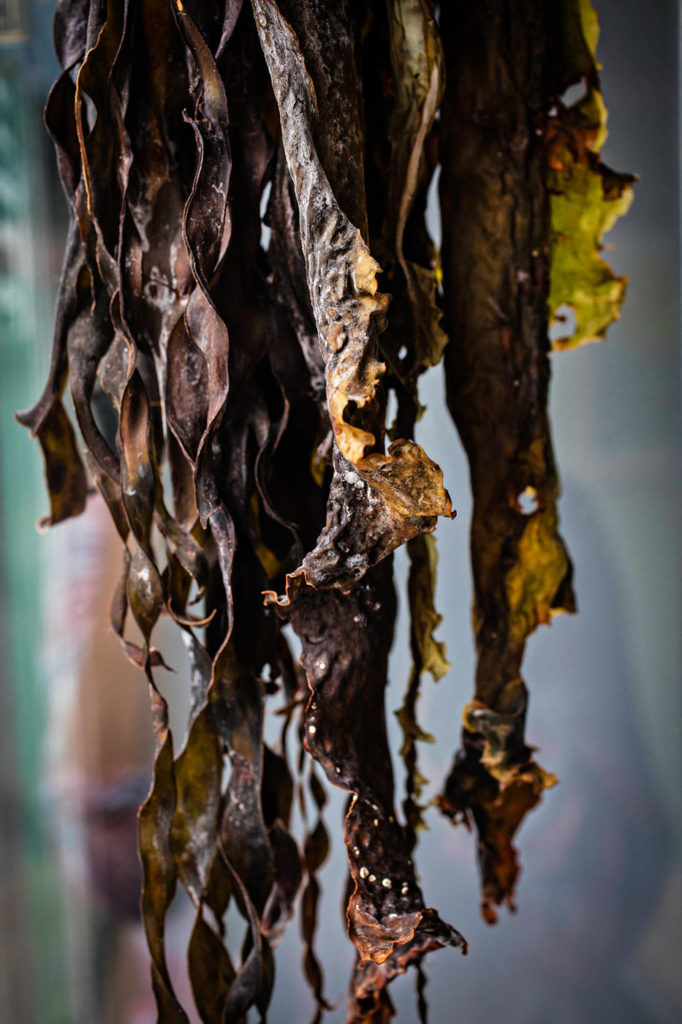
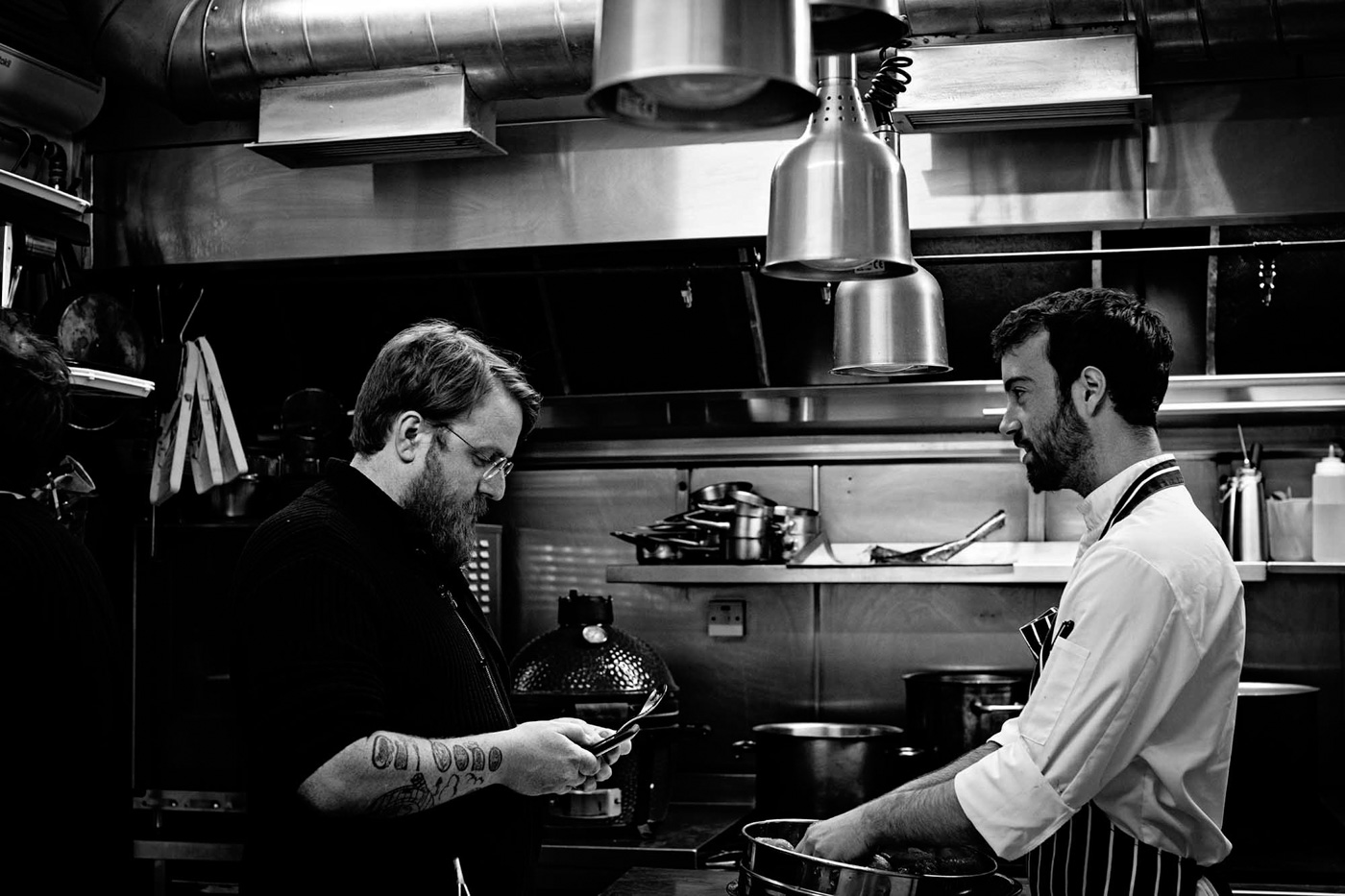
——
Aniar
53 Lower Dominick Street, Galway, Ireland

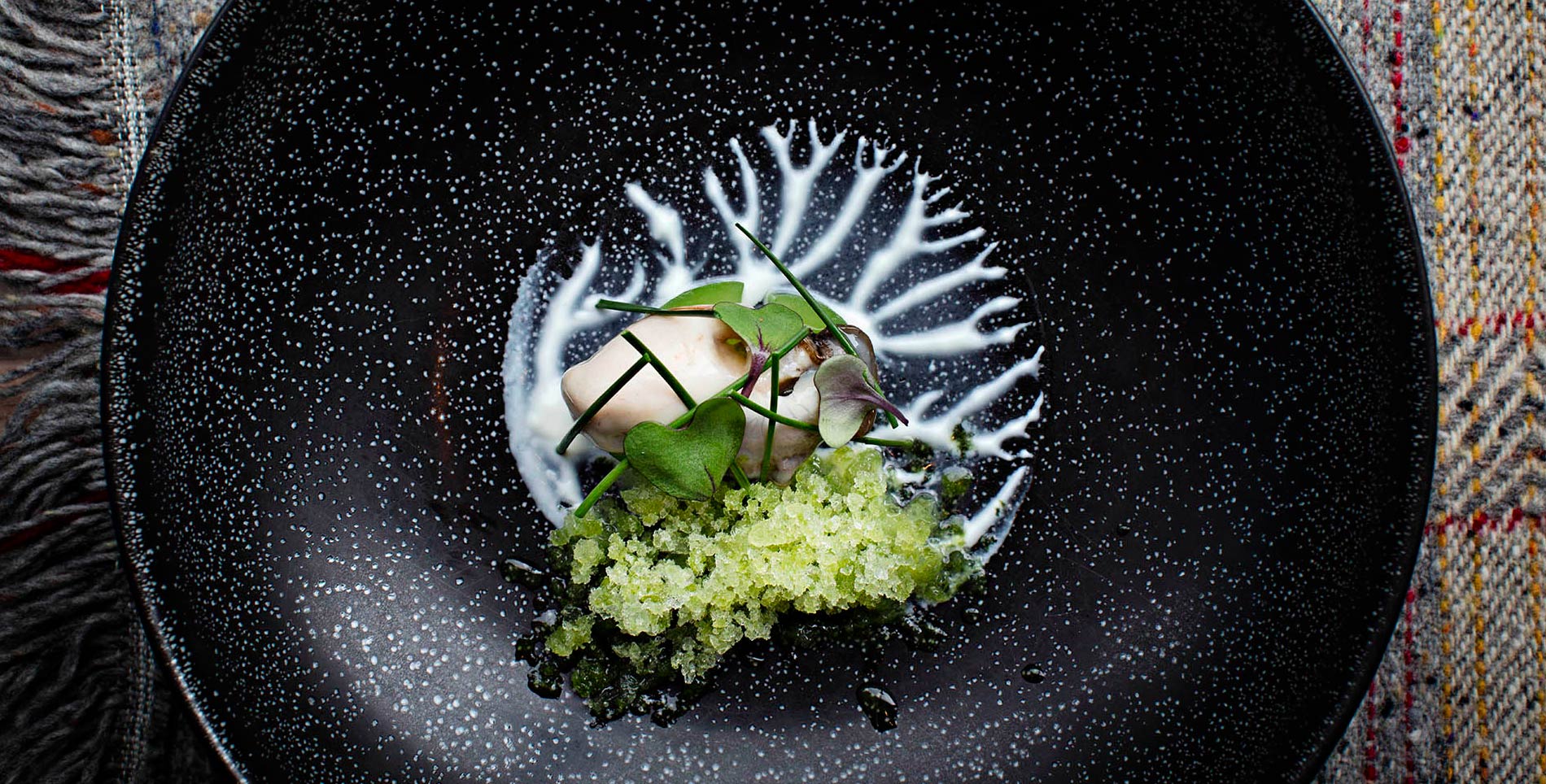

Our comments section is for members only.
Join today to gain exclusive access.